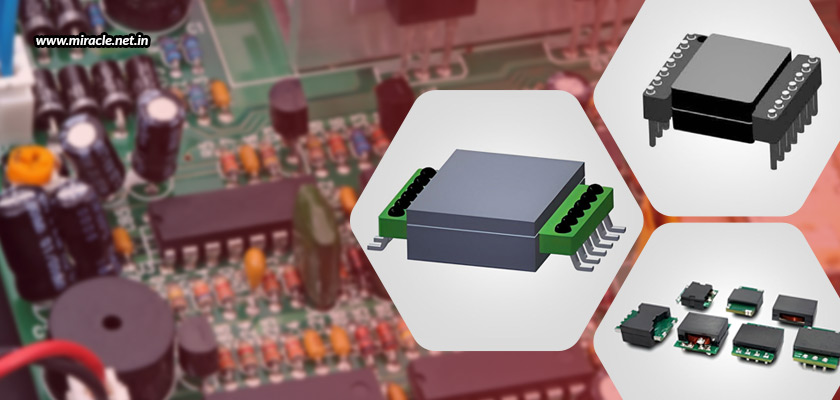Planar transformers are a fascinating new development in the dynamic field of deep learning architectures that hold promise for new methods of managing challenging jobs. As we examine the core of this design, it becomes critical to identify the advantages that distinguish a planar transformer from more conventional equivalents while also taking potential trade-offs into consideration. Let’s explore the terrain of benefits and drawbacks in an effort to understand why planar transformers are becoming more and more popular and when they could be the best option.
Advantages of planar transformers
Increased efficiency
One of the main benefits of planar transformers is their simplified architecture, which lowers the amount of memory required, while also speeding up training times. Because of the efficiency that comes from this simplicity, planar transformers are a desirable choice in situations where computational resources are a crucial factor.
Enhanced scalability for handling large datasets
The architecture of planar transformers offers a sweet spot for applications requiring a significant amount of model capacity as it is made to scale with the size of the dataset with ease. This makes planar transformers a desirable option for large-scale dataset applications like image recognition and natural language processing on large corpora.
Mastered sequential data for detailed pattern identification
Planar transformers are particularly effective at activities that need sequential input and provide sophisticated pattern recognition. Planar transformers are particularly useful in applications where the order of parts is crucial, such as time-series analysis and natural language processing. Their ability to recognize sequential patterns through precisely calibrated attention processes gives them a clear edge in activities requiring a deep comprehension of temporal linkages.
Interpretability as a link between the user and the model
Model decision-making transparency is becoming more and more important, especially in high-stakes applications. Planar transformers enhance interpretability because of their naturally ordered attention patterns. This builds confidence and facilitates debugging as practitioners may learn how the model handles various input data segments. Improved interpretability is a useful feature, especially in industries where model judgements have practical implications, such as healthcare and finance.
Global information flow for long-range dependencies
The ability of planar transformers to manage long-range dependencies is one of its unique characteristics. By use of improved attention processes, these transformers enable enhanced global data flow. This is particularly helpful for activities like language translation or video analysis when it’s important to comprehend links between far-off items. Planar transformers have a special ability to capture complex relationships that conventional transformer layouts could miss.
Limitations of planar transformers
Restricted access to pre-trained models
The ecosystem for planar transformers is still developing, which is why there could be less pre-trained models available to users, which would thus need more work to train models from scratch. That being said, this constraint is probably going to change as the popularity of planar transformers grows and more researchers contribute to the development of pre-trained models.
No one-size-fits-all solution
The type of job at hand can have an impact on planar transformer performance. They perform best in situations with sequential data and long-distance dependencies, although they might not always beat conventional transformers in all usage cases. In order to decide whether a planar transformer is the best option, one must have a thorough grasp of the task’s unique needs.
Difficulty in application and interpretation
Although less complexity is a benefit, it can also provide implementation issues, particularly for people who are not familiar with the design. In comparison to typical transformers, a steeper learning curve may be necessary to fully comprehend the subtleties of the attention processes and the distinctive design decisions made in planar transformers. This intricacy could be a trade-off, especially for practitioners with little background in deep learning.
Training data sensitivity
It is possible for planar transformers to exhibit sensitivity to the properties of the training set. In some circumstances, the architecture may need to be carefully adjusted and optimized in order for it to function at its best on a given dataset. The complex attention patterns and complex interactions that Planar Transformers seek to capture may be the cause of this sensitivity.
Resource-intensiveness in training
Training large-scale planar transformers might need a lot of memory and processing resources. For people or organizations with limited hardware resources, this resource demand may be a barrier. Before starting to train large-scale planar transformer models, it is crucial to thoroughly evaluate the existing infrastructure and budgetary constraints.
As you can see, planar transformers are a potential new development due to their benefits. These advantages do not, however, come without drawbacks. As research evolves, so do the advantages and limitations. Choosing the appropriate design may be made easier by having a thorough grasp of the advantages and disadvantages of planar transformers. Consider Miracle Electronics for the highest in quality and dependability for your transforming projects if you’re looking for unmatched planar transformer solutions. With Miracle Electronics at your side, stay informed, make wise choices, and embrace the ongoing growth of planar transformers.




